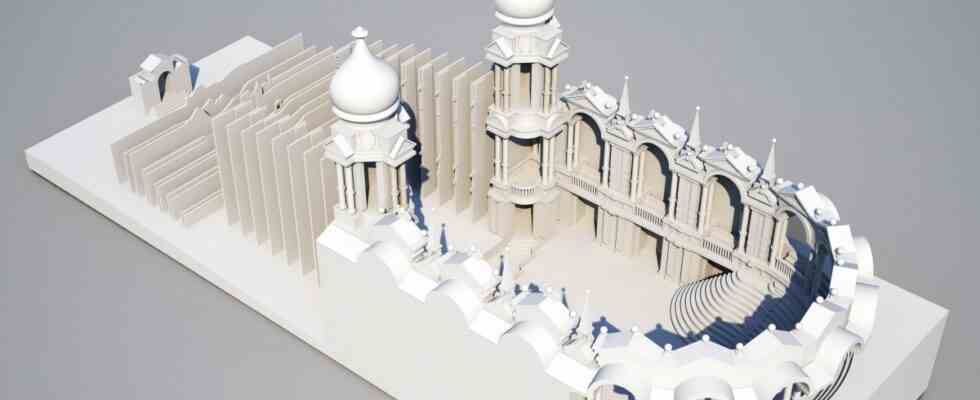The House of Bavarian History is once again looking east. “Baroque! Bavaria and Bohemia” is the title of the next state exhibition, which begins on May 10, 2023 in Regensburg and moves to the Czech National Museum in Prague on December 8, 2023. The show spans the century between 1623 and 1723 and thus a time that is associated with the horror of the Thirty Years’ War, but also with the new beginning after the Peace of Westphalia of 1648.
Dealing with the Bavarian-Bohemian cultural area has almost become a tradition for the House of Bavarian History and its director Richard Loibl: In 2003, “The Winter King” Friedrich V made the start in Amberg, followed by “Bavaria and Bohemia” in 2007. in Zwiesel and in 2017 the German-Czech joint project “Karl IV.”, which attracted 190,000 visitors to Nuremberg and Prague.
The thousand-year family saga of Bavaria and Bohemia is far from over. In the coming year, everything revolves around the topic of baroque, whereby the term not only denotes a style in art, but an entire epoch in which the transience of man was omnipresent.
Project manager Peter Wolf said at the presentation of the concept on Wednesday in Regensburg that they wanted to look at the common history from two different perspectives: While in Bavaria the term baroque is primarily associated with the countless churches and palaces, the Czech view is on the epoch at least ambivalent. This may be due to the fact that the Thirty Years’ War began with the defenestration of Prague in 1618 and two years later reached its first horrific climax not far from the city in the Battle of White Mountain. At that time, the Bohemian army was defeated by the Bavarian and imperial troops – a trauma of Czech history to this day. It was “a kind of primal catastrophe” in Europe, said Wolf.
A thematic focus is dedicated to the architectural style
Although a seemingly endless war raged in Europe, a new architectural style from Italy spread in Bavaria and Bohemia alike: the baroque. A thematic focus of the state exhibition is dedicated to him and his master builders such as the Dientzenhofer family or Balthasar Neumann, for which 50 lenders, mainly from Bavaria and the Czech Republic, made exhibits available.
The years 1623 and 1723 mark the beginning and end of the state exhibition: in 1623, at the Regensburg Princes’ Day, Emperor Ferdinand II transferred the Palatinate electorate, including the Upper Palatinate, to Bavaria’s Duke Maximilian – as a reward for military aid in Bohemia. A hundred years later, in 1723, Emperor Charles VI. and his wife Elisabeth Christine were crowned as the Bohemian royal couple in Prague, with which the Habsburgs consolidated their claim to power over Bohemia. To celebrate, a specially composed opera was performed in a theater for 4,000 people, accompanied by feasts that were intended to show that someone by the grace of God reigns here. Baroque splendor at its peak.
The bridle of Maximilian of Bavaria was made in the workshop of the goldsmith Johann Michael in Prague. It is almost completely decorated with gilded silver plates, the finest wire enamel and countless colorful stones.
(Photo: House of Bavarian History)
After decades of radio silence, Bavaria and the Czech Republic seem to be closely connected again. In any case, Ivana Červenková, the Czech Consul General in Munich, praised the excellent cooperation in all areas. “I believe that the exhibition will also be a political sign of coexistence in the heart of Europe.” And Richard Loibl saw the state exhibition as a “great event for this decade”.
Thematically, it was a long leap from the pathetic words to the Regensburg sewerage system. But Loibl also used the press conference to present his energy-saving plans for the Regensburg museum. Since opening in 2019, this has been heated with waste heat from the wastewater. In the future, there will also be electricity from the company’s own roof; the House of Bavarian History will thus be completely self-sufficient in terms of energy.
After the forced break due to Corona, Loibl was able to report very pleasing visitor numbers for 2022 from his point of view. By the end of the year, 200,000 people are expected to have visited the permanent and special exhibitions. Of these, 100,000 are for the permanent exhibition, in which Bavarian history from 1806 to the present is presented. About 50,000 people were killed in the exhibition “Tavern death? Tavern life!” counted, which will be open until Sunday, December 11th. The show is then to be sent through the Free State as a traveling exhibition.
According to Loibl, the special exhibition on the occasion of the 50th anniversary of the Olympic Games in Munich in 1972 is an almost sensational success. “Bavaria and Olympia. 1896 – 2022” has also been visited by 50,000 people since July, and many more could be be: The term has been extended to July 11, 2023.

